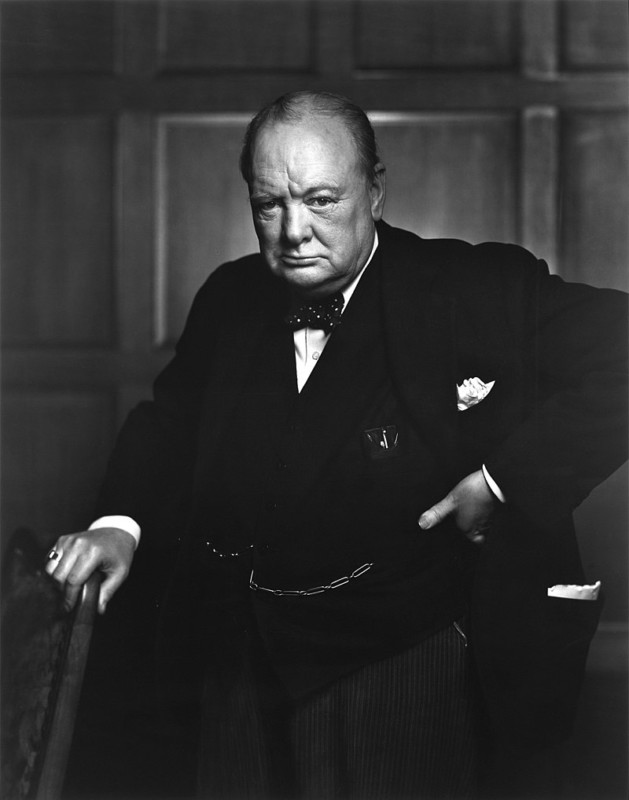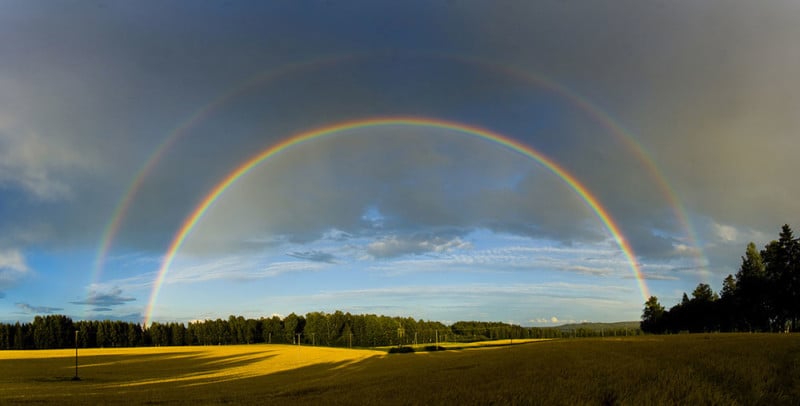Looking vs. Seeing as a Photographer
![]()
I’d like to share some thoughts here on being a musician before I get to the difference between seeing and looking as a photographer. Please bear with me. This will all make good sense.
On the other hand, if a musician is driving around alone with the radio on, and is interested in a song, he is listening and not simply hearing. Most importantly, there is joy in listening because he appreciates the arrangement, skill of the musicians, and production of the song.
The analogy to photography is simple: there is a big difference between looking and seeing.
A photograph is usually looked at—and seldom looked into. —Ansel Adams
A non-photographer sees a scene, but may not appreciate all the subtle details, especially in the shadow and highlight areas. And a non-photographer may see a portrait, perhaps one by Yousuf Karsh (1908–2002), and not appreciate the hours and hours of work that went into the lighting and processing of the photograph.

A photographer, on the other hand, looks at all the details in the scene, and appreciates how our eyes and our cameras capture shadows and highlights, contrast, colors, and details. The photographer would also appreciate, maybe even marvel at, the Karsh of Ottawa (as he was also known) black-and-white portrait of Ernest Hemmingway, which seems to glow from within.
The photographer also looks for creative composition. That act of striving for creative and unique composition is one of the keys to becoming a good photographer, which of course gives us a feeling of well being.
I’d like to share two more thoughts on photographic composition that apply to photo therapy, and of course, your photography.
#1.
I have what I call my “One-Picture Promise.” When you are in a situation, imagine you only have one frame remaining on your memory card, and you can take only one picture. If you think like this, I make you this promise: You will have a more creative photograph. What’s more, during a photo outing, you will have a higher percentage of creative photographs and fewer outtakes.
I can tell you from experience this idea works, because the photographer slows down and thinks—really thinks—before taking a picture. It’s kind of like the Zen Buddhist “one shot, one life” spirit, which is about how achieving a goal goes beyond technique and about how we have to focus with our minds and hearts to reach a goal.
The opposite of my “One-Picture Promise” is OCD. I am not talking about Obsessive Compulsive Disorder, which is a syndrome that makes a person feel driven toward a certain obsession or fear. Rather, I am talking (with tongue in cheek) about Obsessive Clicking Disorder, which I first witnessed on an African photo safari.
When two of the photographers on the safari saw anything even remotely interesting, they clicked away, sometimes taking up to 700 pictures of a subject. One time, the subject was a pack of wild dogs that were sleeping in the shade. The incessant clicking almost drove me nuts!
At the end of the safari, one photographer said, “I filled 24 32GB cards.” The other photographer said, “I took 24,000 pictures.” On that safari, I found that the photographers who followed my “One-Picture Promise” went home with more creative images, not to mention having much more time to work on those important images in Photoshop and Lightroom. But, as my Dad used to say, “To each his own.” FYI: I took maybe 3,000 pictures on that trip.
While I am on the subject of OCD, there is another type of OCD that I do actually have: Obsessive Cropping Disorder. The first thing I think about when I open a file is this: How can I crop the image to make it more interesting, or to give the image more impact?
Some of my professional photographer friends are totally against cropping. They say you must get it right in-camera. However, to those photographers, I say with a smile, “By simply using a telephoto lens, you are cropping out some of the reality from a scene.”
When it comes to cropping, one philosophy to keep in mind is that cropping gives us a second chance at composition.
Enough obsessing over OCD. Let’s get to number two.
#2.
So far, we have talked about music, photography, and Zen. Now I’d like to share a thought about golf with you, which also applies to photography and photo therapy.
I have taken a lot of golf lessons in my life. The best tip I ever received, after the pro saw me take a swing, was: slow down.
That simple tip greatly improved my game.
I give the same tip to my photo workshop students: slow down. Think before you shoot. Enjoy and explore and experience the moment. Think about the “one shot, one life” spirit.

Here is a visual exercise that illustrates the difference between seeing and looking — you can try it the next time you see a double rainbow:
At first glance, the rainbows may appear to be similar, with the second, outer rainbow being a bit dimmer than the main rainbow. But if you look closely, you will see that the colors in the second rainbow are inverted, with blue on the outside and red on the inside. A Google search on double rainbows illustrates this point.
As an aside, in some Eastern cultures, a double rainbow is considered a sign of good fortune. The first rainbow represents the material world and the second rainbow represents the spiritual world.
Speaking of exercises, here is one developed by photographer/photo educator Minor White (1908–1976):
Mr. White would take his students to a rocky area, high above and overlooking the Pacific Ocean, in Shore Acres State Park on the Oregon Coast. The area, introduced to me by my friend Alex Morley, is about the size of a football field. It features a long and wide, fairly level ledge that you can walk on (hiking boots are recommended). There is also a long wall, about 12 or 15 feet high, that you can walk along.
Alex and I have conducted several workshops here, and I can tell you that it’s like being on the moon. The seemingly endless number of soft-looking, but rock-hard shapes on the ledge, carved out of the stone by the wind and water, and the intricate patterns created along the wall, are out of this world.
Minor White would take his students here to learn about composition, to help them develop what he called “pristine vision.” In other words, he would make the suggestion: Don’t photograph shapes and forms you recognize.
Again, having been to this area, which is now known to photographers as “Minor White’s Wall,” using pristine vision is not an easy assignment. In fact, when I lead a photo workshop here, I suggest this exercise: look for and photograph what you recognize. The result? My students have photographs in which you can easily recognize a lion, a heart, a wave, an eye, a bird, a monkey, faces, and more.
They get zoomorphic images, where it’s easy to see an animal in the frame; anthropomorphic images, where a man’s face is the focus of the photograph; isomorphic images, where a shape can’t be mistaken for a common object, such as an ice cream cone; and theomorphic images, where a beast or a wild animal is easily recognizable.
After my students have completed that assignment, I suggest the “pristine vision” assignment. The result: wonderful images of shapes and patterns, and images where light and shadows are the main subjects.
With all this in mind, when you are looking for pictures, look for what you recognize, as well as what you don’t.
![]() Editor’s note: This article is a condensed version of Chapter 7 in photographer Rick Sammon’s new self-published book Photo Therapy — Motivation and Wisdom: Discovering the Power of Pictures (available in both Kindle and paperback forms). The 178-page book contains 0 photos and 35,000 words, and it’s designed to make you think hard about your photography in order to become a better photographer. As Ansel Adams once said: “The single most important component of a camera is the twelve inches behind it.”
Editor’s note: This article is a condensed version of Chapter 7 in photographer Rick Sammon’s new self-published book Photo Therapy — Motivation and Wisdom: Discovering the Power of Pictures (available in both Kindle and paperback forms). The 178-page book contains 0 photos and 35,000 words, and it’s designed to make you think hard about your photography in order to become a better photographer. As Ansel Adams once said: “The single most important component of a camera is the twelve inches behind it.”
About the author: Rick Sammon is a Canon Explorer of Light, book author, Photoshop guy, workshop instructor, musician (keyboards/guitar), and proud dad. The opinions expressed in this article are solely those of the author. You can find more of his work on his website, Facebook, Twitter, and Instagram.
Image credits: Header photo by SofieZborilova